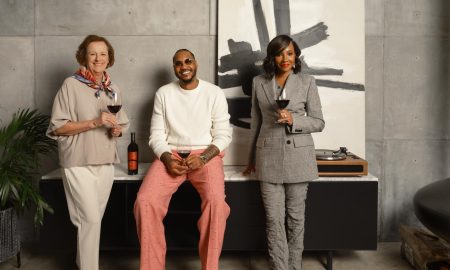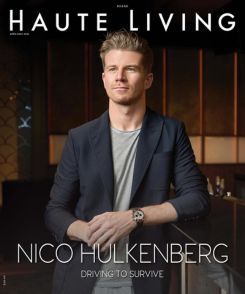On September 9, the doyennes and dons of San Francisco high society will dress in their finest gowns and black tie attire to honor the 98th season of the San Francisco Symphony. A mere two days later, the Bay Area’s elite will once again gather for Opera Ball, which will celebrate the opening of the 87th season of San Francisco Opera.
For decades running, these two events have kicked off the cultural season in the Bay Area. Patrons, sponsors, and guests are treated to magical evenings filled with flowing Champagne, fine musical programs, exquisite cuisine, and dancing, all to honor Bay Area arts organizations.
While for guests, these flawless evenings seem to come together each year by magic, the events are really the culmination of countless hours of tireless toils from the chair and co-chair members, combined with the efforts of the committees and a solid volunteer staff.
While both evenings benefit worthy community organizations, gathering support in 2009 has not been as easy as in years past. Luckily, with Jessa Wu in the role of chairwoman of the San Francisco Symphony Opening Night Gala and Teresa Medearis and Adrianna Pope Sullivan co-chairing Opera Ball 2009, both evenings are on track to be smashing successes, chock full of elegant surprises that will delight the attendees.
In the past, chairing a gala evening was about picking out fonts and paper for the invites and securing donations for the gift bags, but this year these three women have taken party planning to a whole new level. With honed business senses, they epitomize a new breed of socialite, a breed that was born in the boardroom.
Mere weeks from the events, the women took time from their incredibly packed schedules to speak with Haute Living about everything that it takes to pull off such intricate and highly anticipated events, and to do so with the level of class and grace that is expected of San Francisco’s high-society members.
Teresa Medearis
Co-Chair
The San Francisco Opera’s Opera Ball 2009
The San Francisco Opera’s (SFO) Opera Ball is the highlight of San Francisco’s haute culture, year after year. It is known as one of the most important annual social events in the entire nation, garnering the attention of high-society from around the country. This year’s event will celebrate the opening of the Opera’s 87th season while also welcoming acclaimed Italian conductor Nicola Luisotti, who will begin his inaugural season as the music director. The Opera Ball kicks off a weekend-long celebration, with the BRAVO! CLUB, SFO’s young professionals group, also holding its Opening Night Gala on Friday, September 11. Sunday, the festivities continue with the annual San Francisco Chronicle Presents Opera in the Park in Golden Gate Park’s Sharon Meadow. A week later, on Saturday, SFO partners once again with the San Francisco Giants to bring grand opera to AT&T Park with a free, live simulcast of Il Trovatore.
The cornerstone of the celebration is certainly Opera Ball, a collaboration between San Francisco Opera and San Francisco Opera Guild, a separate entity whose mission is to provide opera education and outreach programs, as well as to provide financial support to the San Francisco Opera Association. The Guild is comprised of a dedicated group of 100 men and women who are powerful figures in their respective fields; together, they combine to become an unstoppable philanthropic powerhouse.
Opera Guild director and third-generation San Franciscan Teresa Medearis is armed with her masters in engineering management from Stanford, and she has held management positions at Hewlett-Packard and Price Waterhouse. She is active on a number of boards and committees throughout the Bay Area, and served as co-chair for the opening night gala of Macy’s Passport in 2003. Her two-year tenure as president of the Opera Guild ended last year, at which time she was asked to co-chair Opera Ball 2009, along with Adrianna Pope Sullivan.
Haute Living When did you become involved with the San Francisco Opera?
Teresa Medearis For 10 years, I’ve been a board member of the San Francisco Opera Guild. The Opera Guild’s mission is twofold: one, music education for children, and two, support of San Francisco Opera. The Guild is celebrating its 70th anniversary this year, and the Opera is opening its 87th season. The Guild has been responsible for Opera Ball since it was inaugurated in 1941.
HL Why were you selected as this year’s co-chair for the Opera Ball?
TM I am the immediate past president of the Opera Guild, and I was very flattered to receive an invitation from the nominating committee to be one of the two chairs. I think they were looking for someone with relevant experience in the community and with fund-raising.
HL What all goes into the planning of an event of this caliber?
TM Our goal is to create an extraordinary experience for our guests. We began planning immediately following Opera Ball 2008, and it has been a year of meetings, sponsorships, partnerships, and negotiations. But it’s really—especially this year—the personal touch that makes the difference, having someone personally reach out to a sponsor or patron.
HL What has been the biggest challenge you have encountered?
TM The biggest challenge has been to try to adapt the event to the current economic environment. We thought hard about every aspect of the event, because we knew we needed to be very respectful of our patrons but still maintain the elegance and luster of the gala. We have scrutinized every last detail, to be as fiscally prudent as possible. This year we decided to host Opera Ball in our beautiful San Francisco City Hall. I think this is very symbolic; we are bringing everything together under the rotunda of City Hall to celebrate the Opera, to celebrate our city, to celebrate our community, and all that we have.
HL What is the theme of Opera Ball 2009?
TM We are celebrating the 87th season of the San Francisco Opera, and we have great cause for celebration. We have a new music director, Nicola Luisotti, who is one of the most sought-after directors of our time. Nicola is absolutely passionate about music. He is only the third music director in the Opera’s 87-year history. He is Italian, as was Giuseppe Verdi, the composer of the opening night opera, Il Trovatore, which is set in 15th-century Spain. It is very important for us to welcome Nicola to our community while also honoring our roots. The San Francisco Opera was started by a group of Italian-Americans, and the War Memorial Opera House opened in 1932 in the midst of the Great Depression as a great success. In planning Opera Ball 2009, we derived a lot of inspiration from our heritage and history. Through the elegance of the evening, we are looking to create a very magical experience, with a theme focused around the Spanish opera. Our event designer, Stanlee Gatti, is looking to surprise everyone, and the theme will be carried throughout the cocktail hour and dinner. From the event invitation, which has a black lace Spanish fan across it, through the entire evening, there will be continuity, which is part of the tradition.
HL How are ticket sales going?
TM We are expecting more than 1,000 guests in total, and are thrilled to be completely sold out. Opera Ball often sells out soon after the invitation is mailed in July, although that was not the case this year. People do want to celebrate the opening of the opera, knowing that 100 percent of Opera Ball proceeds benefit much-needed music in schools. So they are coming out, and feeling good about it, all the while understanding that we are doing things differently this year.
HL Who are the main sponsors?
TM We are very fortunate to have many corporate and in-kind sponsors; Boucheron, Hess Collection, Scharffenberger, and Grey Goose. John and Cynthia Fry Gunn are supporting the inaugural season of Maestro Nicola Luisotti as Music Director of San Francisco Opera. The Opera’s cherished Jeannik Méquet Littlefield is Honorary Co-Chair of the Opera’s Opening Night, and Diane B. Wilsey is the Opening Weekend Grand Sponsor.
HL How much of your time is dedicated to the planning of the Opera Ball?
TM Almost 50 percent. A significant amount of time is spent reaching out and personally contacting individuals to tell them how much their past support is appreciated. It’s so important in this economic climate to have each patron understand how vital he or she is to the Opera, and to inspire our patrons to come again.
HL What will you be wearing for the evening?
TM Adrianna and I wanted to wear something in tune with the Spanish theme, so I am wearing a red lace gown by designer Catherine Regehr, known for her classic elegance. We are also honored to be wearing jewels from our sponsor, Boucheron. And for men, Opera Ball is either black tie or white tie. Our husbands are breaking out the tails!
HL What is it about the Opera Ball and the programs that it supports that make you so passionate and dedicated to the San Francisco Opera Guild?
TM San Francisco Opera Guild’s music education programs help ensure that children in Bay Area schools are exposed to opera. I was the recipient of one of the Opera Guild’s programs in the third grade, when I first attended an opera matinee. The Opera has a portfolio of programs that reach more than 50,000 children in the Bay Area annually, from kindergarten through 12th grade. In our newest program, Book to Bravo, students actually write an opera from a story they are studying in one of their classes, and see that opera is a complex art—there is acting and singing, costuming, sets, and music. I am so appreciative to be a part of this, because it is bigger than all of us. Adrianna Pope Sullivan
Co-Chair
San Francisco Opera’s Opera Ball 2009
Adrianna Pope Sullivan joined San Francisco Opera Guild Board in 1989, but she has been active in the San Francisco Opera her entire life. Her grandmother had a box seat—Box O—that her parents eventually took over, and she has been attending the opera since she was a little girl. Her seven-year-old daughter is now experiencing the wonderful art form for the first time, which drives Adrianna even more in her quest to fund the music education programs that the San Francisco Opera Ball benefits.
In addition to her role as co-chair of Opera Ball 2009, Sullivan is an associate director of the Opera Guild. She brings excellent experience to the role; professionally, she is involved in her family’s farming business in San Joaquin Valley, as well as with the Carlisle Collection, a women’s fashion company based in New York. In addition to co-producing “Classical Action,” which raised more than $1 million for local AIDS charities, she is a vice president of Madera County for the Society of Pioneers. She also has the added benefit of having served as co-chair for Opera Ball 1998.
Haute Living When did you first become involved with the San Francisco Opera?
Adrianna Pope Sullivan I have been going to the opera since I was a little girl, and I went to my first opening night when I was 17, with my mother the year that my father passed away. I was invited at a very young age to join the Opera Guild when I returned to San Francisco after graduating from the USC School of Cinema and Television in the 1980s. I was a newbie!
HL You have past experience as a chairperson of the Opera Ball. Why do you think you were selected for a second Ball?
APS I was invited because my family has been so involved in the opera. My mother has many great friendships with a lot of the “old guard”—the great patrons of the opera. This year, we really wanted to bridge the gap between the new, up-and-coming supporters and the lions and lionesses of the opera. The Guild thought I could help build that bridge.
HL What goes into the planning of an event of this caliber?
APS It’s really like a big wave that’s rolling; it’s a collaborative effort, and it’s not a two-woman show. There are a lot of moving parts. Following last year’s Opera Ball, we took the time to debrief about the successes of the 2008 event and the challenges we would be facing this year. The bottom line was that we wanted to fill the party and ensure everyone had a wonderful and glamorous experience, while still being very cognizant of the economy. We went through the budget line by line, and made decisions that are a little different this year.
When I first attended the Ball with my mother when I was 17, it took place in the War Memorial Veterans Building, which is where we are doing our reception this year. It’s really a beautiful venue, and we are so excited about the support we have received and the general enthusiasm.
HL Did you have difficulty securing sponsors this year?
APS Very fortunately, the Opera has had many sponsors for years that have been very loyal to us, so our first step was to go back to them and ask them to participate again this year. That’s always the first line of defense. With the economic climate, it takes a little more effort, but we have strong relationships with all our sponsors. I can’t actually recall one sponsor that didn’t return; some may have opted for a slightly less expensive table, but they are participating and we are very grateful for that.
HL Were you surprised that the Opera Ball sold out so quickly?
APS For San Francisco, Opera Ball is kind of like our Academy Awards, a real signature event. It gets people’s attention, and is the opening of our social season.
HL How would you compare being a co-chair of Opera Ball 2009 with your experience as co-chair of Opera Ball 1998?
APS We have been a lot more involved in the fundraising and budgeting aspects of the planning. Before, we were more focused on the décor and that sort of thing. The shift has made the role of co-chair much more focused on the business aspects. These days, the Guild’s Board of Directors is comprised of many more professional women, so it’s really run like a business. The bottom line is not about party favors; it is about what we can do for our programs and how we can fund music in schools. In fact, we didn’t even look at party favors this year. In the past, we might spend a lot of time soliciting stores and vendors for crystal party ware and that sort of thing. This year, we realized our patrons don’t want another goody bag to take home. They would rather have the money go to the programs.
We also have Stanlee Gatti as the event designer this year, and he really is the gold standard in San Francisco. Working with him negates the need for micromanaging; we don’t have to pick out the lace detail on the napkins for the dinner. I call him the matador of our Spanish-themed opera. He is an artist that works with the whole team.
HL How much of your time is dedicated to your co-chair role?
APS It comes in spurts, but there has been a lot of work. What’s wonderful now is how we are all connected by technology. When I did this in the ’90s, we didn’t have conference calls! The technology allows us to do a lot of fundraising from our own offices, which is much more effective. I will take an afternoon and make all of my phone calls. Teresa and I, along with our Opera Ball committee co-chairs, have tried to make personal phone calls to our many past attendees to thank them. We have done a tremendous outreach this year. We know people are making choices so we felt the personal outreach was important. And we are still calling! I am going to call right up until the fire marshal tells me that I can’t squeeze in one more person.
HL What will you be wearing for the event?
APS I decided to up my donation to the Guild this year and shop in my own closet. I will be wearing a dress by Jean Louis; he did the dress Marilyn Monroe wore for JFK’s birthday. My mother’s dear friend gave me the dress in my mid-20s. It’s a beautiful black chiffon and lace, off-the-shoulder gown with a tiered skirt, and it is so Spanish that I don’t think I could do any better. The fact that it is vintage is very cool—I would rather give more.
HL What is it about the Opera Ball and the programs that it supports that make you so passionate and dedicated to the San Francisco Opera Guild?
APS The funding is down for music in our schools, and education really opens the minds of our children. Exposing them to the opera impacts children in such a positive way. My daughter attended The Elixir of Love last year, and she has been to The Little Prince, which is a San Francisco production in Berkeley. I look forward to many more opportunities to attend opera performances with her.
Jessa Wu
Chairwoman
The San Francisco Symphony Opening Night Gala
Famed conductor Michael Tilson Thomas will open the San Francisco Symphony’s 2009-10 season with a gala concert featuring renowned pianist Lang Lang. Prior to the program, which will include Lang Lang performing Prokofiev’s Piano Concerto in C major, as well as a diverse trio of waltzes by the San Francisco Symphony, guests will gather for the Patrons’ Dinner in the Louise M. Davies Tent Pavilion, while nearby at the San Francisco City Hall, the Symphony Supper and Symphonix Dinner will be held in the Rotunda and North Light Court respectively.
In all, there will be roughly 1,400 guests attending these dinners, making the planning process a task that could be described as beyond arduous. But Jessa Wu barely broke a sweat ironing out the details. The Hong Kong native, who has been in San Francisco for almost 20 years, cut her teeth in the gala-planning process when she first became involved as an honorary chairperson of the Chinese New Year Celebration Concert in 2004. She reprised her role as chairwoman in 2005 and ‘06, and was invited this year to chair the Symphony’s most important annual event—the Opening Night Gala. With her life-long love of classical music, she brings a passion about music education to the chairperson position that is necessary in making this event a smashing success.
Haute Living How long have you been involved with the
San Francisco Symphony?
Jessa Wu I began my involvement with the Symphony in 2004. The first year, I was invited to be an honorary chair of the Chinese New Year’s concert. The following three years, I chaired the Chinese New Year’s concerts.
HL Why were you selected to be this year’s chair of the
Opening Night Gala?
JW After I was done with my chair position for the Chinese New Year Celebration Concert, they invited me to be the co-chair of the Patrons’ Dinner at last year’s Opening Gala. So naturally, they invited me to chair the 2009 Opening Gala. The Symphony has different people chair the events every year to keep everything fresh.
HL What all goes into the planning of such a lavish and extensive event?
JW As the chair, my role is to put on the three dinners that we have on the opening night: the Patrons’ Dinner, which will have 750 guests attending; the Symphony Supper, with 350 guests; and the Symphonix Supper, the event for younger patrons, with 300 guests. We also plan the pre-concert cocktail reception and the after-party. We actually have three different venues for these parties; we will put up the tents for the Patrons’ Dinner, and the two other dinners will be held at City Hall—across from the Symphony Hall—and we have to coordinate the décor, dinners, and guests.
Since January, we have held a committee meeting once a month, and I meet with the symphony staff one or two times each week. I also do a fair share of publicity work. The Symphony staff and the whole management team are so professional, and they make the entire process a pleasure.
HL What is the theme of this year’s Opening Night Gala?
JW We do have a theme this year, but it really doesn’t have much to do with the décor. Due to the current economy, we felt that a lot of people would feel that a party such as ours would be a little too extravagant. So we are making the entire party “green.” Nothing will go to waste. All three dinners will be environmentally friendly, and all décor will be 100 percent recyclable and reusable. There will be no waste. We also wanted to send a message that this event is for charity, to raise funds for the Symphony and the community programs, rather than just about having a party and having fun. By being green, we are showcasing our dedication to helping the area even more.
HL Who is responsible for the event planning?
JW Robert Fountain is doing the event planning and décor for this year. He has worked with the Symphony in the past, and is one of our partners.
HL What is the biggest challenge you encountered during the planning?
JW I think the most challenging thing about fundraising is finding sponsors and supporters, and convincing people to come out and join the party, which is especially true in this economic climate. We were a little worried, because we encountered a lot of past patrons who either reduced their contributions or were not able to donate at all. But instead of just sitting and stressing about it, we started planning and contacting people earlier this year than in the past; while typically, we start in February or March, we began planning in January, and so far are doing pretty well.
HL How are ticket sales going?
JW The sales are good! Three weeks from the event we were close to having 90 percent of tickets sold for the Patrons’ Dinner. For the Symphony Supper, we are 100 percent sold out. I think the Symphonix, since they are the younger group, is more affected by the economy, and those sales are significantly lower—only about 50 percent sold. Hopefully, they will catch up! As for general tickets, the whole Symphony can accommodate 2,700 tickets; after the three dinner packages, only 700 tickets remain for the general public, and about 50 percent of those are sold out.
HL Now that the event is just around the corner, what does your day-to-day planning entail?
JW We are working on the final decisions regarding the décor. We are still reaching out to our sponsors and patrons, and also focusing on PR and marketing, trying to create publicity for the whole event.
To help this process, we have a number of pre-events, which we started earlier than usual this year as well. We held two preview events for the Patrons’ Dinner. In April, there was a pre-launch party in Silicon Valley to target young professionals and the high-tech crowd. The event took place at Village Park in Woodside—a very popular location for technology buffs and venture capitalists. One hundred and fifty people were in attendance, and we received a lot of ticket orders following the evening, so it was a success. Then in June, we held the Summer Soiree in Conductor Michael Tilson Thomas’ home, and invites went to guests of the Patrons’ Dinner.
For the Symphony Supper, the pre-event took place in Nob Hill at Le Club. We had nearly 200 people attend, and tickets sold very swiftly after the evening. The Symphonix launch party was two weeks ago, and a lot of fun people attended—close to 200 people in total. While there are still tickets available for the Symphonix dinner, I feel the younger people tend to make the decision last minute, so we are still working on them.
HL What is it about the Opening Night Gala and the programs that it supports that make you so passionate and dedicated to the San Francisco Symphony?
JW The reason I am so committed to the symphony is because I truly love the community education programs. One is called Adventures in Music, a very comprehensive program for San Francisco’s public elementary schools. It has a lot of ensemble performances, with musicians going into the schools to teach the children about the instruments and how to appreciate different types of music. Also, we benefit Concerts for Kids, an annual event the symphony holds for children in first to ninth grades throughout the entire Bay Area. I am also especially proud of the Youth Orchestra of the San Francisco Symphony, because I think they are one of the best in the country.


















